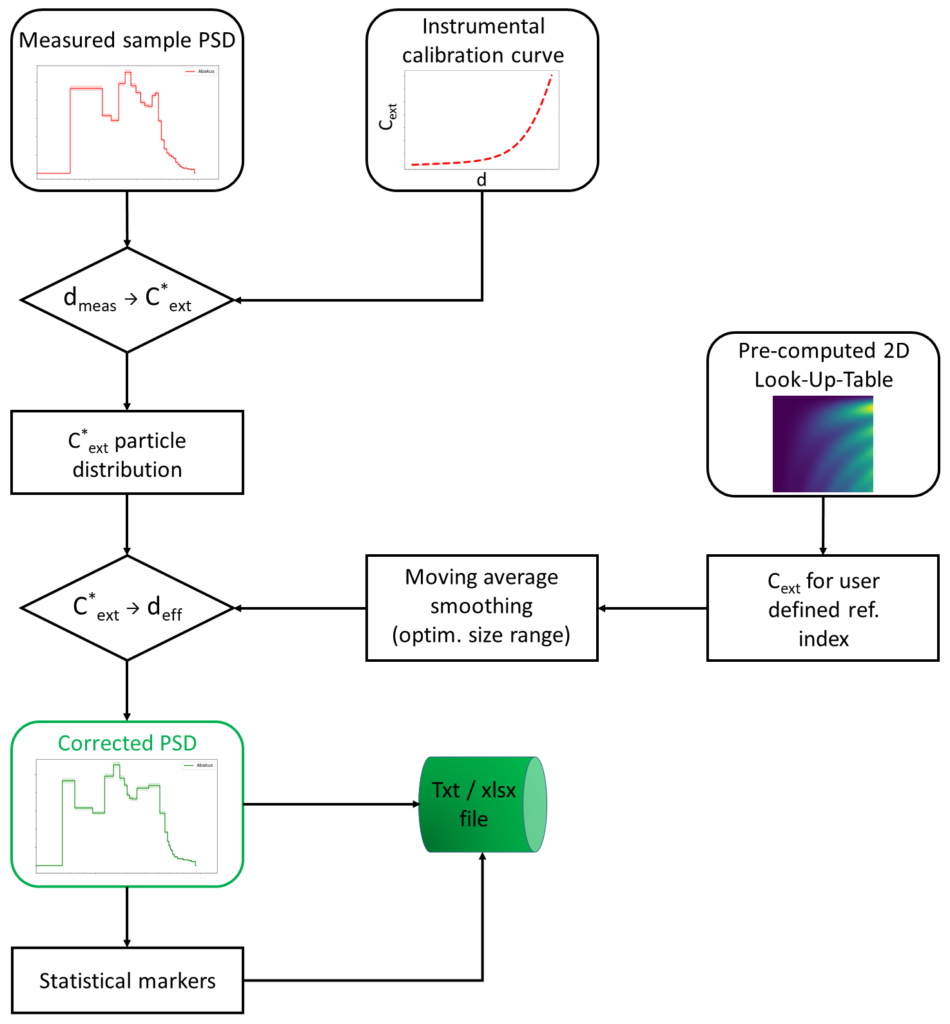DEDALO (“Device for Enhanced Dust Analysis with Light Obscuration Sensors“) is an open-source Python-based GUI software that allows to operate an in-line SPOS instrument and further analyze the data by compensating for the refractive index value, according to the specific sample composition. The open problem we want to address is that the standard calibration procedure for commercial SPOS instruments is usually based on polystyrene spheres: it is assumed that the size of a particle is that of the polystyrene sphere that causes the measured attenuation of the laser beam. However, the refractive index (n) of particles that populate real samples can appreciably differ from the reference value (n0) and can depend on temperature and pressure. This implies that the size of particles characterized by n≠n0 will be under-/over-estimated. Moreover, the more the refractive index of the particles deviates from the calibration standard, the less accurate the PSD will result. DEDALO operates on SPOS data with the refractive index as a free parameter to be set by the user according to the sample, fixing this limitation.
In addition, DEDALO also recovers the numeric concentration of the sample, which is not dirctly provided by the instrument. The algorithm computes Cext analytically with Mie scattering theory; smoothing functions are then introduced as in traditional instruments. Each instantaneous PSD and the time-integrated one are written into a file, together with some statistical markers such as the PSD mode diameter and the distribution quantiles. They are formatted both as spreadsheets and as text files, complying with most data visualization tools.
The general workflow is sketched here:

The algorithm was validated with a range of laboratory-prepared oil emulsions characterized by different refractive index values, ranging from 1.42 to 1.64, and was also used to perform accurate and high-resolution PSDs measurements in meltwater from the cryosphere, as commonly done through SPOS instruments.
This study builds on a collaboration between the Instrumental Optics Laboratory form the University of Milan and the EuroCold laboratory of the glaciology and palaeoclimate group at the University of Milan-Bicocca, where all these methods are commonly adopted for characterizing micron-sized dust from ice cores.
Contact information
Author: Luca Teruzzi
Email: luca.teruzzi@unimi.it
ORCID: 0000-0001-7356-7671
